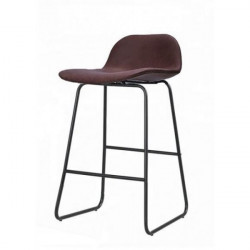



- Stock: In Stock
- Model: ES697
0% Customers recommend this product
-
5 Awesome0%
-
4 Great0%
-
3 Average0%
-
2 Bad0%
-
1 Poor0%
Reviews Over Triacutane ointment 15 g against fungus.
- (0)
Total Reviews (0)
click here write review to add review for this product.
Report this review.
Description
Composition
active substances Triacutane: betamethasone, clotrimazole, gentamicin;
1 g of ointment contains betamethasone dipropionate in terms of 100% substance 0.64 mg of gentamicin sulfate in terms of gentamicin 1 mg of clotrimazole in terms of 100% substance 10 mg
excipients Triacutane: phenoxyethanol, octyldodecanol, mineral oil, white soft paraffin.
DRUG FORM
Ointment.
BASIC PHYSICAL AND CHEMICAL PROPERTIES:
Triacutan ointment is white or almost white.
PHARMACOLOGICAL GROUP
Corticosteroids for use in dermatology. Corticosteroids in combination with antibiotics. Betamethasone and antibiotics.
ATX code D07C C01.
PHARMACOLOGICAL PROPERTIES
Pharmacological.
Triacutane combines the anti-inflammatory, anti-allergic and vasoconstrictive effects of betamethasone dipropionate with the broad antifungal effect of clotrimazole and a wide spectrum of antibacterial activity of gentamicin sulfate. Clotrimazole has an antifungal effect on the cell membrane of fungi, leading to leakage of cellular contents.
Clotrimazole provides effective action against dermatophytes, yeasts and molds, such as Trichophyton rubrum, Trichophyton mentagrophytes, Epidermophyton floccosum, Microsporum canis and Candida (including Candida albicans)
Gentamicin provides a highly effective topical treatment of primary and secondary bacterial skin infections.
Gentamicin is active against Staphylococcus aureus, Staphylococcus epidermidis (coagulase-positive, coagulase-negative and some penicillinase-producing strains) and gram-negative bacteria: Pseudomonas aeruginosa, Haemophilus influenzae, Moraxella lacunusaria colirata neraularia colirata neraisularia coli neraisularia coli, Nera coliella vulgaria nera, Colonia coliella strata, Nera, Colonia coli, Ulocaria vulgaris, Moraxella lacuniaria colirata, Colonella vulgaris, Nera, Colonaria vulgaris and Nephrolithidae.
Pharmacokinetics
There are no data on the pharmacokinetics of the drug Triacutan.
Indications
Treatment of dermatoses sensitive to corticosteroids in the presence (or suspicion) of bacterial and / or fungal infections caused by microorganisms sensitive to the components of the drug Triacutan.
Contraindications
The drug Triacutan is contraindicated in patients with hypersensitivity to active substances or to any other component of the drug Triacutan. Skin tuberculosis, skin manifestations of syphilis, skin reactions after vaccination, common plaque psoriasis, varicose veins, perioral dermatitis, rosacea, chickenpox, other bacterial and fungal infections of the skin without proper antibacterial and antifungal therapy.
The drug Triacutane should not be applied to the mucous membranes, eyes or areas around the eyes.
INTERACTION WITH OTHER MEDICINES AND OTHER KINDS OF INTERACTIONS
When using ointments on the skin of the genital organs and around the anus, the presence of soft paraffin (an auxiliary substance in the composition of the drug Triacutan) can reduce the tensile strength of latex condoms, which reduces their reliability when used.
When applied topically, clotrimazole may be an antagonist of amphotericin and other polyene antibiotics.
APPLICATION FEATURES
Triacutane is not intended for use in ophthalmology.
With the development of skin irritation or manifestations of hypersensitivity during treatment with Triacutan ointment, the use of the drug Triacutan should be discontinued and the patient should be selected with adequate therapy.
When applied topically, the systemic absorption of active ingredients may be higher when using the drug Triacutan in large areas of the skin, with prolonged use or when applied to damaged areas of the skin. In this case, side effects may occur that are observed after systemic use of active substances. In such cases, the use of the drug Triacutan children should be carried out with extreme caution.
With the simultaneous systemic administration of aminoglycoside antibiotics, the probability of a combined toxic effect (ototoxicity / nephrotoxicity) should be considered.
Cross allergic reactions with aminoglycosides were observed.
Prolonged local use of antibiotics can sometimes lead to the growth of resistant microflora. In this case, as well as with the development of superinfection, therapy with Triacutan should be discontinued and appropriate treatment should be prescribed.
To use the drug Triacutan under an occlusive dressing should only be under regular medical supervision.
Corticosteroids should be used with caution when applied to the skin of the face and genitals. In such cases, the course of treatment should not exceed 1 week.
Continuous treatment for more than 2-3 weeks is not recommended.
GCS can mask the symptoms of an allergic reaction to one of the components of the drug Triacutan.
Pediatric patients may exhibit greater sensitivity with respect to GCS-induced inhibition of the hypothalamic-pituitary-adrenal system and Itsenko-Cushings syndrome than adult patients, caused by a large ratio of skin area to body weight.
APPLICATION DURING PREGNANCY OR BREAST-FEEDING
So the safety of the use of local corticosteroids in pregnant women has not been established, the appointment of these drugs is possible only if the expected benefit to the expectant mother clearly exceeds the potential threat to the fetus. Preparations of this group should not be used by pregnant women in large doses, on large areas of the skin and for a long time.
There are insufficient data on topical application of gentamicin and clotrimazole.
It is not known whether corticosteroids, when applied topically as a result of systemic absorption, can pass into breast milk, so when deciding whether to stop breastfeeding or stop taking Triacutan, it is necessary to consider the importance of treatment for the mother.
The ability to influence the reaction rate when driving vehicles or other mechanisms. Typically, the drug Triacutan does not affect the reaction rate when driving or working with other mechanisms.
Dosage and administration
Apply triacutane in a thin layer on the entire affected surface and the adjacent area of the skin 2 times a day, morning and evening. To obtain the effect of triacutane should be used regularly. The duration of treatment varies depending on the size, location of the lesion and the effectiveness of the therapy. If the clinical effect is not observed within 3-4 weeks, the diagnosis must be reviewed.
CHILDREN
It is not recommended for children, since there is no experience with the use of the drug Triacutan in patients of this age category.
Overdose
With prolonged or excessive use of local GCS, inhibition of the pituitary-adrenal system is possible with the development of secondary adrenal insufficiency and the appearance of symptoms of hypercorticism, including Cushings disease. The use of clotrimazole under an occlusive dressing for 6:00 did not lead to the development of overdose symptoms. Clotrimazole with local and vaginal administration is absorbed minimally.
A single overdose of gentamicin did not lead to symptoms of an overdose. Excessive or prolonged use of gentamicin can lead to excessive growth of antibiotic-insensitive microorganisms.
Treatment. Prescribe appropriate symptomatic therapy. Symptoms of acute hypercorticism are usually reversible. If necessary, electrolyte balance should be corrected. In the case of chronic toxic effects, gradual withdrawal of GCS is recommended. In case of excessive growth of resistant microorganisms, it is recommended to stop treatment with Triacutan and prescribe the necessary therapy.
Adverse reactions
On the part of the skin: dry skin, pigmentation disorder (hypopigmentation), hypochromia, burning, erythema, exudation and itching, blisters, peeling, swelling, itching, urticaria, general skin irritation, folliculitis, hypertrichosis, acne-like rashes, perioral dermatitis, allergic contact dermatitis, maceration of the skin, the development of secondary resistant flora, atrophy of the skin, stria, prickly heat, purpura, hypersensitivity reactions, telangiectasias, subcutaneous hemorrhages, rosacea, skin color changes, photosensitivity.
When used on large areas of the skin, under occlusive dressings and / or for a long time, adverse reactions may occur:
From the endocrine system: inhibition of the synthesis of endogenous corticosteroids, excessive adrenal activity with edema.
From the side of metabolism: the appearance of latent diabetes mellitus.
On the part of the hearing organs, inner ear / kidney, with the simultaneous systemic use of aminoglycoside antibiotics, combined ototoxicity / nephrotoxicity may occur with the use of Triacutan ointment in large areas of the skin or on affected skin.
From the musculoskeletal system: osteoporosis, growth retardation (in children).
SHELF LIFE
2 years.
STORAGE CONDITIONS
Store Triacutane in its original packaging at a temperature not exceeding 25 ° C. Keep Triacutane out of the reach of children.
PACKAGING
15 g of Triacutane in an aluminum tube. 1 tube per pack.

















































